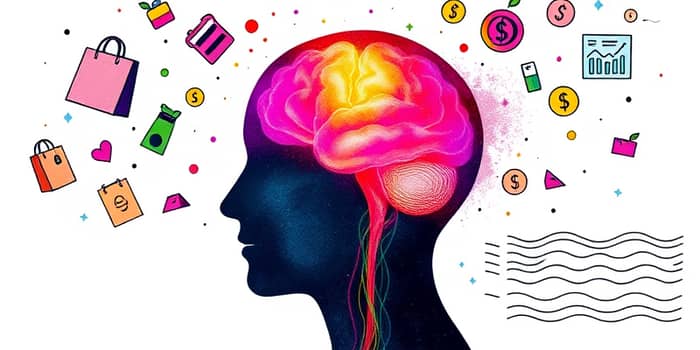
Every time you swipe a card or click "buy now," there’s more at play than a simple transaction. Our minds are wired to seek joy, avoid pain, and respond to social cues. Understanding these hidden forces can empower you to make smarter decisions and reclaim control of your finances.
By demystifying the underlying drivers of spending—from brain chemistry to cultural pressure—you can transform impulsive buying into mindful choices that align with your long-term goals.
When you anticipate a new purchase, your brain lights up with pleasure signals. Scientists have found that shopping can trigger the release of dopamine, a powerful neurotransmitter linked to reward. This anticipation of a purchase lights up the same neural circuits that respond to food, social connection, and even addictive substances.
This surge of dopamine explains why a simple window-shopping stroll can leave you feeling elated. Unfortunately, the rush is often short-lived, driving you to chase the next high in a cycle of impulse buys and fleeting satisfaction.
Our moods profoundly influence spending habits. Research shows that when we feel sad, stressed, or lonely, we may turn to shopping for a quick emotional fix. This phenomenon, often dubbed "retail therapy," can lead to unnecessary purchases and mounting debt.
Emotional dips can weaken our ability to resist temptation. While that new gadget or luxury item might provide a brief lift, the aftermath often includes regret and financial stress. Recognizing this pattern is the first step toward breaking it.
In the age of social media, peer pressure extends far beyond your immediate circle. Studies reveal that 35% of Americans overspend to impress friends or emulate influencers. Scrolling through curated feeds can trigger envy, making you feel as though you’re missing out unless you buy the latest trends.
Cultural norms and upbringing also shape our financial behaviors. Children as young as five display distinct spending styles—some are natural "tightwads," feeling emotional pain when parting with money, while others are "spendthrifts," lacking that internal brake. Remarkably, these tendencies can emerge independently of parental habits.
Our brains rely on shortcuts, or cognitive biases, to navigate complex decisions. While useful, these mental shortcuts can skew how we perceive costs and rewards. For instance, the instant gratification bias leads us to favor immediate pleasures over future well-being, undermining savings goals.
Implementing a mental budgeting system can counteract these biases. By mentally allocating funds to specific categories—groceries, entertainment, bills—you create guardrails that curb impulsivity. People who practice this mental categorization and tracking report lower stress and greater financial stability.
Turning psychological insight into action requires deliberate effort. The following strategies can help you navigate emotional triggers and align your spending with core values:
Retailers and brands design pricing and promotions to tap into our psychological vulnerabilities. From "limited-time offers" to subscription models that exploit inertia, these tactics can nudge you toward spending more than planned. Awareness is your best defense.
By understanding common marketing ploys—like decoy pricing or bundled deals—you can spot when your choices are being steered and choose a path that serves your financial health instead.
Knowledge alone won’t transform habits; action does. Start small. Implement one or two strategies, track your progress, and adjust as you learn. Celebrate victories, no matter how minor—each intentional purchase strengthens your financial resilience.
Above all, remember that mastering your money psychology is a journey, not a destination. With consistent effort and self-awareness, you can reshape your spending patterns, reduce stress, and build a future defined by choice rather than compulsion.
Empowered by understanding and mindful practice, you can break free from subconscious spending loops and channel your resources toward what truly matters—security, freedom, and lasting satisfaction.
References













